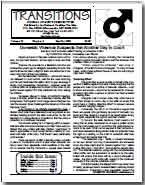Adam Bede revisits topical changes to English manliness and gentlemanliness at the turn of the nineteenth century. In her novel, written almost sixty years into the 1800s, George Eliot recognizes how new thinking about these gendered concepts changed the traditional ways men governed their manhood. Arthur Donnithorne and Adam Bede most prominently represent contending late-eighteenth century and early nineteenth-century forms of manhood in the novel, and they fittingly test their mettle by boxing, which many contemporary Britons thought fostered manly and gentlemanly qualities. Both men are profoundly affected by their fight. Each learns the limits of his particular form of manhood: Arthur realizes that traditional gentlemanliness no longer entitles him to unaccountable behavior; Adam discovers that attaining manhood requires a commitment to managing manly conduct attentively.
From New Male Studies: An International Journal – Vol. 1, Issue 1, 2012, pp. 94-107.
Source: Manliness, Gentlemanliness, and the Manhood Question in George Eliot’s Adam Bede (http://newmalestudies.com/OJS/index.php/nms/article/view/10)


